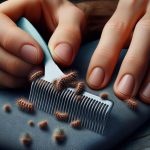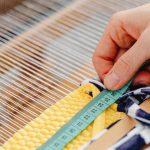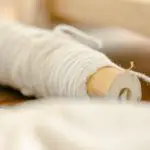Just the other day, I found myself battling yet another invasion of beggar lice on my hiking clothes, a nuisance many of us are all too familiar with. I've tried various methods to get rid of these pesky burrs, from meticulously picking them off one by one to experimenting with tools like combs and duct tape.
Each method has its merits and drawbacks. In my quest for the most efficient technique, I've gathered some tips and tricks that might just change the game for you.
Stick around, and I'll share insights on how to tackle this prickly problem effectively, without damaging your favorite outdoor gear.
Table of Contents
Key Takeaways
- Identify beggar lice by their arrow-shaped hooks and pre-treat clothes by brushing off excess seeds before washing.
- Utilize manual removal techniques like lint rollers, sticky tape, or hand-picking under bright light for thorough seed elimination.
- Wash and dry carefully, avoiding machine washing for fleece, and consider air drying to prevent seed transfer.
- Implement preventive measures by choosing smoother-textured clothing and storing cleaned items in sealed bags to deter seed attachment.
Identifying Beggar Lice
Before we tackle the removal process, let's first get to know our clingy adversary, the beggar lice, a bit better. These nuisances, also known as burrs, are more than just a simple annoyance. They're small seed-like plant parts designed with nature's Velcro – tiny hooks that cling to anything that brushes against them. You'll often find them in fields, forests, and grassy areas, where they attach themselves to clothing and animal fur with surprising tenacity.
Identifying beggar lice is key to mastering their removal. Look for their distinctive small, arrow-shaped structure covered in hooks. These hooks are what make them so effective at hitching a ride on your clothes or your pets. Understanding their appearance and behavior is vital for anyone looking to rid their garments of these unwelcome passengers.
To prepare for their removal, it's wise to have a comb at hand. A comb isn't just for hair – it can be your first line of defense in detaching these stubborn seeds from your clothing. By using a comb, you can gently tease beggar lice out of the fabric, minimizing damage and frustration.
Pre-Treatment Tips
Before we tackle those stubborn beggar lice, let's start with some essential pre-treatment tips.
First off, I always check the fabric type to guarantee I'm using the right method that won't damage my clothes.
Then, I'll brush off any excess seeds and apply a stain remover to any spots, setting the stage for a successful cleaning process.
Identify Fabric Type
Identifying your garment's fabric type is important in effectively removing beggar lice seeds, as some materials attract these pesky seeds more than others. Knowing whether your clothes are made from denim, fleece, nylon, or corduroy can drastically change your approach to tackling this issue.
Here are my top tips:
- Check the label: Always start by checking your garment's care label for fabric information.
- Understand fabric traits: Denim and fleece are magnets for beggar lice seeds, making them tougher to clean.
- Choose wisely: If you're heading into an area known for beggar lice, opt for nylon or corduroy attire to minimize seed attachment.
Brush Off Excess Seeds
To effectively tackle those stubborn beggar lice seeds, start by briskly brushing off any excess from your clothes using a stiff brush or your hands. This initial step helps to remove as many seeds as possible before moving on to further treatment.
I've found that using a lint roller or masking tape can also pick up those loose beggar lice seeds that are more easily accessible on the fabric. After brushing, I always shake out the clothing vigorously or use a blow dryer on a cool setting to dislodge any remaining loose seeds.
Then, under bright light, I inspect the clothing to manually remove any stubborn seeds still clinging on. Trust me, pre-treating your clothes by getting rid of as many seeds upfront makes the whole process more effective and efficient.
Apply Stain Remover
After brushing off the loose seeds, applying a stain remover will help tackle the sticky residue left by beggar lice on your clothes. Pre-treating the affected areas boosts the chances of completely removing these stubborn bits. Here's how I go about it:
- Choose the Right Stain Remover: Look for products with enzymes or surfactants. These ingredients are brilliant at breaking down the residue and lifting it off the fabric fibers.
- Follow the Instructions: Every stain remover comes with its own set of instructions. I always make sure to read and follow these carefully for the best outcome.
- Let It Sit: Allowing the stain remover to sit for the recommended time before washing makes a huge difference in the effectiveness of the pre-treating process.
With these steps, I've turned a frustrating chore into a manageable task.
Manual Removal Techniques
Now, let's talk about manual removal techniques for getting beggar lice off your clothes.
I've found that using a lint roller or sticky tape can quickly pick up those pesky burrs.
If those don't work, hand-picking them off one by one is a surefire method, although it's a bit more time-consuming.
Using Lint Roller
I've found that a lint roller's sticky surface is remarkably effective at snagging those pesky beggar lice off my clothes. It's not just about the convenience; it's about the efficiency of this method too. Here's how I make the most of it:
- Roll it Over the Fabric: I gently roll the lint roller back and forth over the affected areas of my clothing. The adhesive surface grabs onto the beggar lice without missing a beat.
- Repeat if Necessary: Sometimes, a single pass isn't enough. I don't hesitate to go over the area a few more times to make certain every single burr is captured.
- Check for Missed Spots: After rolling, I inspect my clothes to make sure no beggar lice have been left behind. This method is gentle on the fabric, preventing any damage.
Sticky Tape Method
While the lint roller method works wonders, another handy approach for those stubborn beggar lice is using sticky tape. This technique shines when you're dealing with the pesky hooks of beggar lice seeds.
Here's the thing: the adhesive nature of sticky tape is a game-changer. By gently dabbing or rolling the tape on the affected areas, it effectively picks up those tiny nuisances without harming your clothes. It's all about the careful application and removal of the tape to capture and pull out the beggar lice seeds.
This method isn't only convenient but also incredibly efficient for a quick fix. Trust me, sticky tape can become your go-to solution for keeping your clothes free from beggar lice seeds.
Hand-Picking Method
For those with a bit more time and patience, hand-picking beggar lice off your clothes can be an incredibly effective method. This approach is straightforward but requires a keen eye and some diligence. Here's how I tackle it:
- Inspect in Good Light: I always start by spreading the affected clothing under bright light. This helps spot the beggar lice clearly.
- Manual Removal: With patience, I pick each burr off, one at a time. It's a bit time-consuming but very thorough.
- Regular Checks: To prevent a buildup, I make it a habit to check and clean my clothes regularly, especially after walking through infested areas.
Hand-picking might take a bit more effort, but it's a surefire way to keep those pesky burrs at bay!
Washing and Drying Strategies
Let's plunge into the best washing and drying strategies to tackle those stubborn beggar lice seeds on your clothes.
First off, if you're dealing with fleece, steer clear of the washing machine. It seems that fleece and beggar lice have a love affair, and washing won't break them up effectively. So, what's a savvy cleaner to do?
Before I even think about throwing my clothes in the wash, I've found using a washcloth to gently coax those pesky seeds off can make a world of difference. It's a bit of manual labor, yes, but it preps your clothes for a more successful wash. However, I've learned the hard way that even after a thorough wash, some tiny, splinter-like remnants might stick around. They're sneaky like that.
Now, you might be tempted to grab a pet hair rake or a cat brush, thinking they'll do the trick. I've been there, done that, and let me tell you, it's not as effective as you'd hope. Instead, I've embraced a more unconventional approach: wearing the clothes on a few more outdoor adventures. It seems a bit of rough and tumble in the great outdoors helps dislodge any lingering beggar lice debris. It's an unexpected solution, but sometimes, nature's way is the best way.
Using Adhesive Tools
Diving into adhesive tools, I've discovered that duct tape can be a game-changer in pulling those stubborn beggar lice seeds right off your clothes. The process is surprisingly simple and doesn't harm the fabric, which is a huge relief. By pressing and rolling the adhesive side of the tape over the affected areas, the seeds adhere to the tape, leaving your clothes clean and free from those pesky burrs.
Here's how I tackle beggar lice with adhesive tools:
- Choose Your Weapon: Not all tapes are created equal. I find that duct tape has the perfect level of stickiness for this job without leaving any residue.
- Apply with Precision: Lay your garment flat and press the tape firmly onto the areas with beggar lice. The trick is to cover all the seeds without pressing so hard that the tape sticks to the fabric itself.
- Lift and Repeat: Peel the tape back slowly. You'll see the seeds come right off with it. Repeat as necessary, using fresh pieces of tape until all the beggar lice are gone.
Using adhesive tools is a straightforward, efficient way to rid your clothes of beggar lice. Plus, it's satisfying to see those seeds stick to the tape and away from your clothes!
Specialized Products
While adhesive tools like duct tape work wonders, exploring specialized products such as BurzOff can offer an even more targeted approach to removing beggar lice from your clothes. The beauty of BurzOff lies not just in its efficiency but in its commitment to sustainability, being made from recycled beer bottles. It's a win-win for both your wardrobe and the planet.
Let's investigate into some specifics:
| Feature | Benefit |
|---|---|
| Material | Made from recycled beer bottles, promoting sustainability. |
| Design | Comes in shapes for both burr and fur removal. |
| Safety | Odor-free and safe for all outdoor clothing. |
| Durability | Resistant to water, heat, and cold, ensuring long-term use. |
I've seen passionate discussions on platforms that include forums about the best ways to tackle beggar lice. Reviving an old thread or starting a new one about BurzOff could enlighten many outdoor enthusiasts seeking an effective solution. It's a clear, friendly, and concise tool that aligns perfectly with the desires of those looking to master the art of keeping their outdoor gear clean.
Preventive Measures
Why not take a proactive step in choosing the right clothing materials to greatly reduce the chances of beggar lice seed attachment? In my journey to master the art of avoiding these pesky seeds, I've discovered that prevention isn't only possible but practical.
Here's what I've learned about selecting the right clothing materials and other preventive measures:
- Choose Your Materials Wisely: Opt for nylon or corduroy over denim and definitely steer clear of fleece. These choices are less inviting for beggar lice seeds.
- Go for Smooth Textures: Clothing with smoother textures is less likely to trap these seeds. It's a simple change that can save you a lot of hassle.
- Regular Inspection is Key: Make it a habit to quickly inspect and clean your clothes after being in areas known for beggar lice. Catching them early prevents them from embedding deeply.
Frequently Asked Questions
How Do You Get Rid of Beggars Lice?
I first pick them off one by one, then I might use a comb, knife, or even duct tape. Rubbing with cotton or blasting with an air compressor works too. Specialized tools are also helpful.
How Do You Get Boogie Lice Out of Clothes?
I'd start by gently picking them off, then use a fine-tooth comb or duct tape. Rubbing with cotton balls or blasting with an air compressor can also work. Tools like Burzoff might be a lifesaver here.
How Do You Get Beggars Lice Out of Your Hair?
To remove beggar lice from my hair, I use a fine-tooth comb and gently detangle, dislodging the seeds. I also apply conditioner to ease the process, avoiding sharp objects to prevent scalp injury.
What Do Beggar Lice Look Like?
Beggar lice look like small, arrow-shaped seeds with two points at one end. They've got tiny hooks that make them stick to clothes and fur, often found in grassy or forested areas.
- Tetron Fabric for Marine Applications: Durability and Use Cases - June 18, 2025
- Tetron Fabric for Outdoor Furniture: Weather Resistance and Care - June 18, 2025
- Tetron Fabric for Wall Coverings: Style and Application Tips - June 18, 2025







